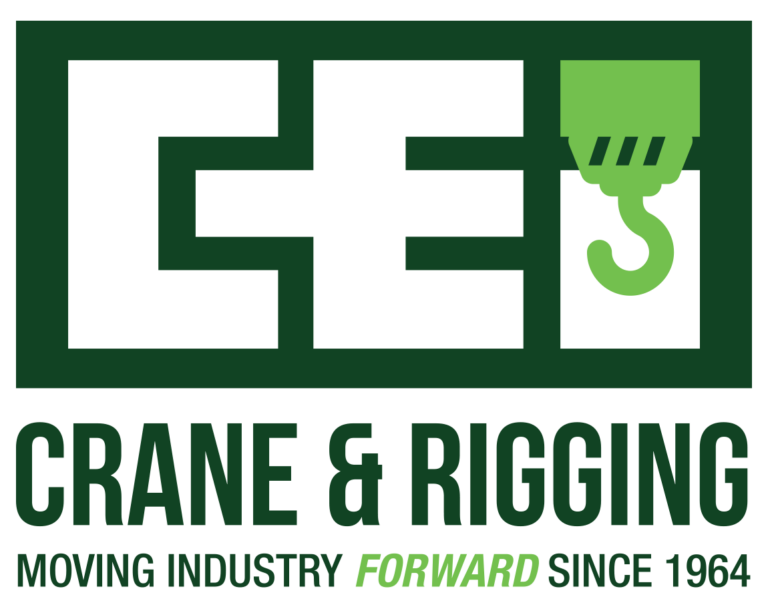At CEI Crane & Rigging, we take safety very seriously. Our heavy haul movers prioritize safety and adhere to the rigorous safety standards set by OSHA and ANSI. We want to make sure your largest equipment or supersize loads arrive safely and on time—and no one gets injured in the process.
Our team of trained and safety-certified experts have learned a lot in their decades of experience in heavy haul trucking jobs. Here are our top ten safety tips for heavy machinery moving.
1. DEVELOP A PLAN
The first tip is the first step you should take: develop a plan. Going through every facet of the process will help you recognize potential safety hazards. Then, you can either resolve them before you start moving or have greater awareness of them for when the time comes.
If you’re working with a reputable moving company, like CEI Crane & Rigging, they will help you through the process.
2. PRE-WORK INSPECTIONS
Employees should complete a visual inspection of both the heavy machinery being moved and the equipment being used to move it. This daily checklist should cover things like oil levels, condition of hydraulic hoses, wear and damage on tires, locking attachments, and so on.
Once the equipment is started, the operator should also run through a quick checklist to make sure lights and horns are working, buckets and arms fully extend, etc.
3. SELECT THE RIGHT OPERATOR FOR THE JOB
Selecting an experienced operator to control the moving equipment is key to a safe, efficient move. Even more important than experience is an operator who is also heavily trained in safety procedures.
Proper training should include a mix of classroom and hands-on learning. It should cover equipment safety features and maneuvering, start up procedures, safe mounting and dismounting (which is our next tip), load capacities, etc.
Continued education and on-going training are important as well.
4. FOLLOW THE 3-POINT RULE
The three-point rule states that, when mounting and dismounting equipment, the operator should always maintain three points of contact on the equipment. This could be both hands and one foot or one hand and both feet.
This may seem like a small item to include as its own safety tip. However, OSHA has found that the most injuries occur when a person is getting on and off equipment. It’s important to shut off, park, and release pressure from hydraulic controls; follow the three-point rule; refrain from jumping to dismount; and ensure your hands are free from carrying anything.
LOOKING FOR HEAVY HAUL TRUCKING SERVICES? LEARN MORE
5. USE A SEATBELT
This tip is self-explanatory. Wear a seatbelt while operating heavy machinery. You’ll stay safer and prevent getting a citation from OSHA.
6. WATCH YOUR SURROUNDINGS
When operating heavy machinery or while working on the ground, be sure to watch your surroundings. Don’t assume that everything will go according to plan, especially when moving heavy machinery through public areas.
If you’re the one operating the machinery, be sure to check for blind spots before starting the equipment. Being cognizant of those while working, and using a spotter to help, will ensure everyone on site stays safer.
7. MAINTAIN LINES OF COMMUNICATION
Beyond having a spotter who is designated to your blind spots, other spotters can be used throughout the moving process. Ensuring they are able to communicate as needed via two-way radio, signs and/or hand signals will help everyone involved or approaching the moving process.
8. SAFELY LOAD AND UNLOAD EQUIPMENT
Loading and unloading heavy machinery can be very dangerous if safety protocols are not followed. Some examples are:
- Ensure you’re loading and unloading on level ground
- Ensure the area is free of people, especially those who are not needed in the process
- Have a spotter on hand to help you and those who may be near
- Using a top loading vehicle? Ensure the cab shield or canopy protection isn’t suffering from any damage.
9. KNOW LOAD LIMITS
Load and lifting limits will vary between equipment. It’s important to know the appropriate size and weight for the equipment you’re using, as well as ensuring the correct attachments are utilized.
You never want to assume a piece of equipment can handle a load. If it fails, the whole team and the machinery could be put in danger.
10. KNOW YOUR LIMITS
Knowing your own limits is a safety tip many people think they can power through. However, if you wind up in a situation in which you feel uncomfortable, make sure others know. They can bring in additional help or sub in another operator.
It doesn’t matter how many years of experience you have. There’s a chance you may wind up in a situation like this one day, and it’s better to bring awareness to it than powering through and potentially putting you, the team and the machinery in danger.
PARTNER WITH A TRUSTED HEAVY MACHINERY MOVING COMPANY
There are plenty more safety tips we could include on this list. The amount of issues that could go wrong while moving heavy machinery reinforces the idea of working with a trusted moving company.
At CEI Crane & Rigging, we move heavy machinery safely and efficiently, with not only your equipment in mind but also your business and employees.
If you’d like to learn more about how we can assist you with heavy machinery moving, contact us or request a quote today.
